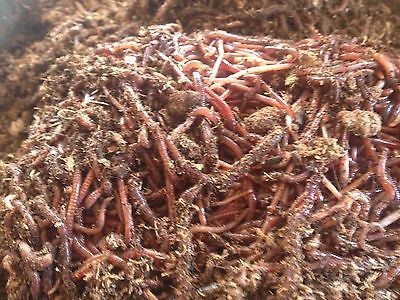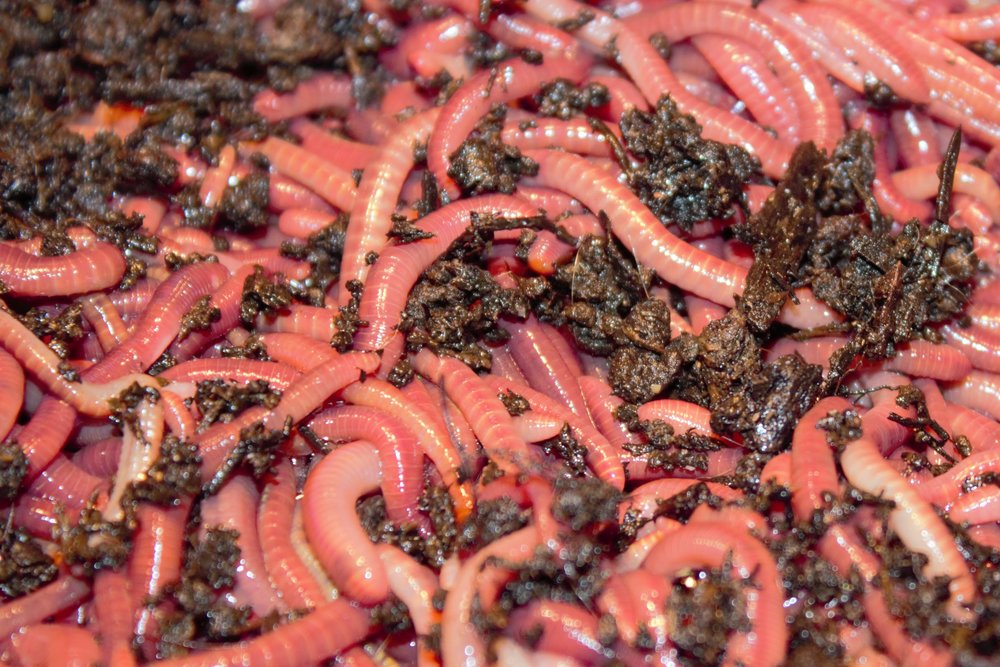Red wigglers: Expand your worm farm
Red wigglers: Expand your worm farm
Blog Article
Everything You Required to Learn About Red Wigglers for Composting
Red wigglers, or Eisenia fetida, play an essential function in the world of composting, transforming organic waste into valuable dirt changes. The process of establishing up a worm container and preserving it can pose obstacles.
What Are Red Wigglers?

(Charlotte Worm Farms)
Indigenous to The United States and copyright, red wigglers are surface-dwelling organisms that choose damp, warm habitats abundant in decaying natural matter. Their diet is composed largely of rotting plant material, food scraps, and other natural particles, which they take in and break down successfully. As they absorb this product, they generate nutrient-rich spreadings that improve soil fertility.
Red wigglers are hermaphroditic, having both male and female reproductive organs, and can duplicate quickly under ideal problems. Overall, red wigglers are important factors to the procedure of reusing organic waste into useful garden compost.
Advantages of Using Red Wigglers
Using red wigglers in composting systems uses countless benefits that enhance both the effectiveness of waste administration and the top quality of the resulting garden compost. These worms, scientifically known as Eisenia fetida, are especially reliable at damaging down raw material, transforming kitchen scraps and yard waste into nutrient-rich garden compost at a sped up price.
Among the key benefits of using red wigglers is their ability to consume large quantities of organic material, usually refining their weight in food waste daily. This high consumption price leads to faster disintegration and reduces the volume of waste sent to landfills. Furthermore, the castings created by red wigglers are abundant in vital nutrients, beneficial bacteria, and enzymes, making them an excellent plant food for yards and plants.
Additionally, red wigglers grow in a selection of settings, making them adaptable for both indoor and exterior composting systems - red wigglers. Their visibility in a garden compost bin helps to freshen the material, preventing odors and advertising a healthy composting process. On the whole, using red wigglers not only adds to efficient waste administration yet additionally sustains sustainable horticulture methods through the manufacturing of high-grade garden compost
(Lake James Bait)
Establishing Up Your Worm Container
To successfully set up a worm bin, it is vital to select an ideal container that fulfills the demands of red wigglers while providing a conducive environment for composting. A suitable bin can be made from plastic, wood, or metal, with an ability of at the very least 1 square foot for every pound of worms.
Ensure the container has sufficient drainage openings to stop excess dampness, as red wigglers flourish in a wet, however not water logged, setting. red wigglers. The container must likewise be ventilated to provide sufficient airflow, preventing anaerobic conditions that can damage the worms
A suitable place for the worm container is an awesome, dark location, without direct sunshine and severe temperatures, as red wigglers like a temperature level variety of 55 to 77 levels Fahrenheit.
Before presenting the worms, prepare bed linens materials such as shredded newspaper, cardboard, or coconut coir, which will certainly supply both habitat and food. Dampen the bedding lightly to produce an inviting setting for the worms. Take into consideration putting a lid on the bin to maintain humidity and minimize pests, while guaranteeing it can be easily gotten rid of for maintenance.
Feeding and Treatment Guidelines
Feeding red wigglers is an important facet of preserving a healthy composting system. These worms grow on a diverse diet regimen, primarily made up of organic products such as fruit and vegetable scraps, coffee grounds, and crushed eggshells. It is important to avoid feeding them meat, dairy products, and oily foods, as these can develop unpleasant smells and attract parasites.
When presenting food to your worm container, slice or shred products right into smaller sized items to assist in quicker decay. Beginning with percentages to gauge the worms' usage price, gradually boosting the quantity as they adjust. It is advisable to alternating feeding areas within the bin to motivate detailed mixing and aeration of the garden compost.

Troubleshooting Common Issues
Preserving a flourishing worm composting system can in some cases offer obstacles that need interest and troubleshooting. Common concerns consist of an unpleasant odor, which often shows overfeeding or the existence of anaerobic conditions. To remedy this, lower the quantity of food added and see this make certain appropriate aeration by blending the bed linen material.
An additional constant trouble is the getaway of worms from the bin. This can take place because of excessive dampness or inappropriate ecological conditions. Routinely examine the wetness levels, going for a damp yet not soggy uniformity, and preserve optimal temperature levels between 60-80 ° F(15-27 ° C )to produce a comfortable environment for your red wigglers.
Bugs, such as fruit flies, can also attack worm bins. red wigglers. To fight this, cover food scraps with a layer of bedding or shredded paper to prevent flies from laying eggs. Additionally, make certain that any food included is fresh and free from mold and mildew, which can attract unwanted parasites
Finally, if your worms appear inactive, look for stress and anxiety elements such as temperature level fluctuations or poor dampness. Dealing with these usual concerns will assist maintain a healthy and effective worm composting system.
Final Thought
In summary, red wigglers, or Eisenia fetida, play an important function in sustainable waste administration with vermicomposting. Appropriate configuration and maintenance of a worm bin, along with adherence to feeding guidelines, guarantee a flourishing community that lessens garbage dump contributions.
Report this page